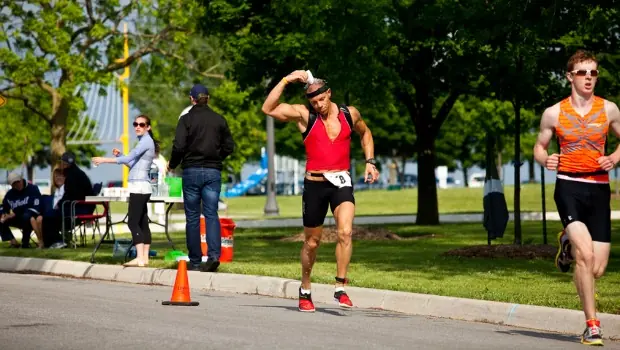
(From Facebook: R. Bruce King) What are some tips we might not know about to keep cool during hot races?
The strategies for dealing with high temperatures on race day are fairly well known, but the science behind them is not always understood, and they are not always properly implemented.
Studies have shown that there is an inverse correlation between performance and core temperature--meaning pace slows as the body heats up. This limitation is most likely explained as the brain protecting the body from pushing too hard and overheating. There are several strategies for maintaining core temperature and maximizing athletic performance that include heat acclimation, pacing adjustment, cooling protocols and mind tricks.
Triathlon Events Near You
More: Training For a T1 Transition
Heat acclimation is more than just getting used to higher temperatures. There are several physiological changes that occur when the body is exposed to increased heat and humidity. These changes include increased blood plasma, sweat efficiency and cardiovascular function. Most athletes will see a higher rate of these adaptations within the first days of exposure, and a slower rate for approximately two weeks until acclimation is maximized. Athletes should arrive at their race site early or duplicate race conditions as best as possible to ensure adequate preparation.
An athlete's ability to proportionately adjust pace to match conditions may be their best indicator of success. Adjustments should be made based on course conditions, weather and the athlete's ability and experience. A qualified coach is a great resource to discuss altering paces to meet the demands of race day.
More: Wetsuit Basics for New Triathletes: Racing
In an attempt to regulate core temperature, the body will redirect warm blood to the surface of the skin to dissipate heat away from the body. Cold water and sponges on the skin's surface will assist in maintaining core temperature. Ice can also be utilized to help maintain temperature and is especially effective in areas with high blood vessel concentrations near the skin. However, too much ice applied directly to the skin can cause constriction of blood vessels and a counterproductive result.
Finally, convincing the brain it is not actually as hot as perceived can help an athlete feel cool and maximize performance potential. Items such as hats and dark sunglasses can help create the illusion of cooler temperatures and give the athlete a mental edge.
While increased temperatures on race day will affect everyone to varying degrees, the athlete who formulates and executes a proper plan will be set up for success and maximize race day potential.



